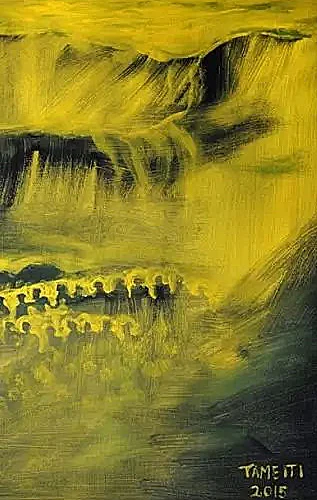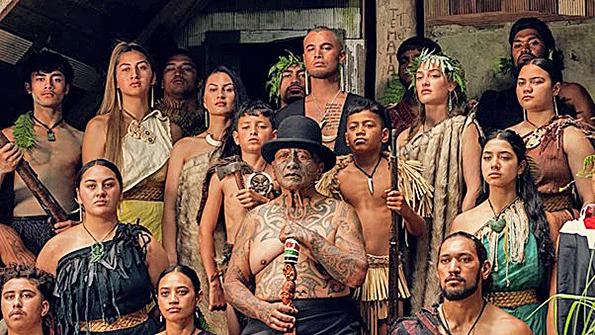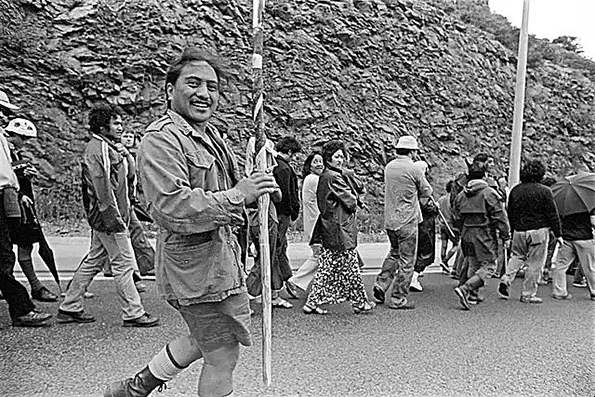Tāme Iti: 'I was a quiet person'
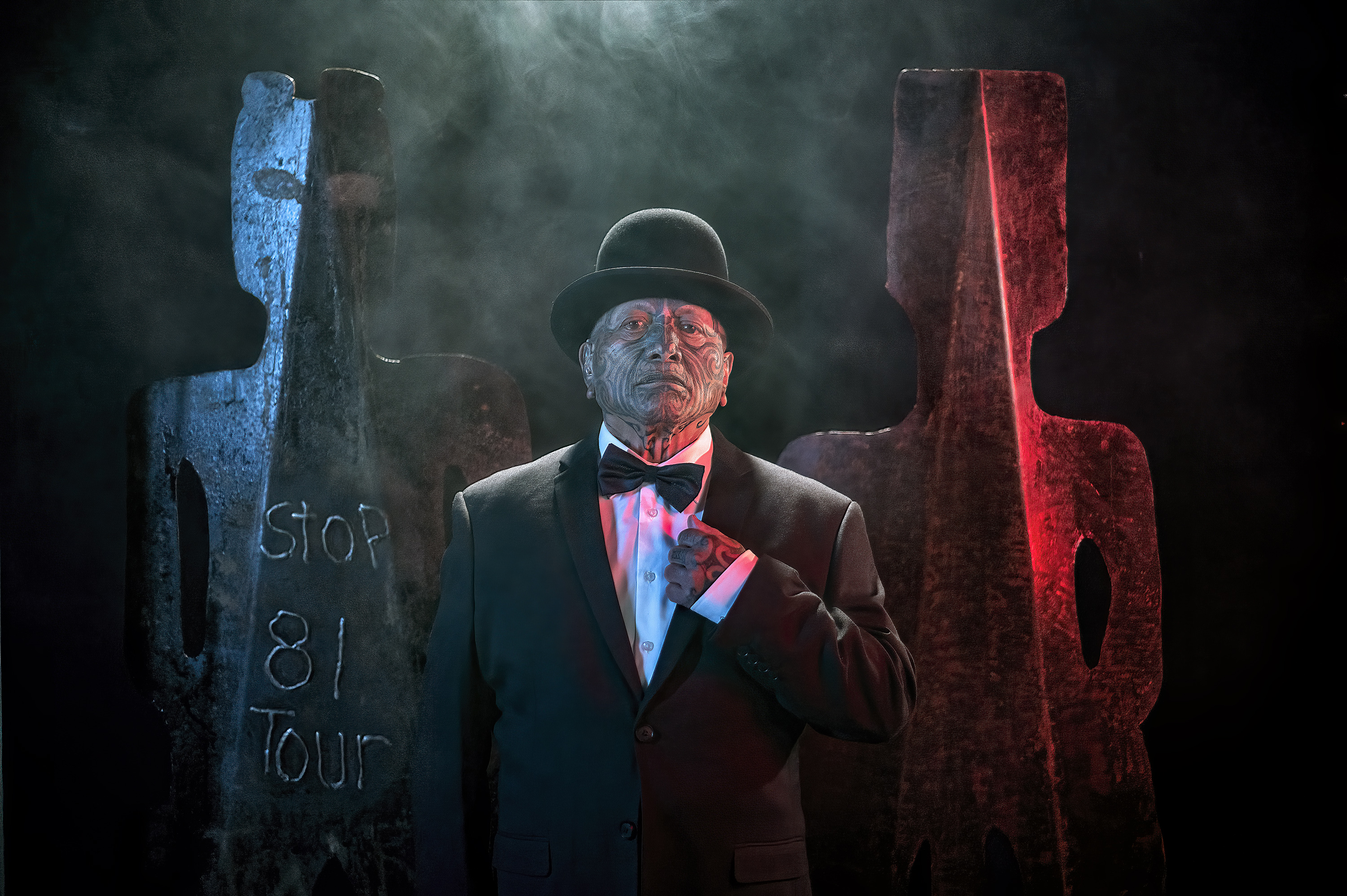
MULTI-MEDIA: Tāme Iti’s 2022 multimedia installation <em>I Will Not Speak Māori</em> was a reflection on the punishment he received for speaking te reo Māori at school. Photo supplied
Contributed
■ In the new memoir Mana, 73-year-old Tāme Iti reflects on his evolution as an artist and activist
Tāme Iti (Ngāi Tūhoe) has brought his bold creative powers to every major moment in Māori activism in the past 50 years, but finding his own voice was a journey in itself, he said.
Growing up in the Bay of Plenty town of Rūātoki, Iti was the family tonotono [“runner” or “gopher”] – in charge of knowing just how every adult liked their cup of tea and delivering these on cue.
“I didn’t hear my voice until probably I was 19 or 20. I was a quiet person,” he told Saturday Morning’s Mihi Forbes.
Although he grew up as a native speaker of te reo, Iti was barred from speaking it in school in the 1960s. Moving to Christchurch as a young man, he tried to “get his brain together” in a process he describes as something like weaving.
“I was interested. I was really hungry to learn, to know, I need to know what’s going on, what’s happening.”
For Iti, this meant studying communism, learning about interior design and discovering how to use oratory in English.
“I spent two years with a kuia [female elder] in Shirley, paying her 20 cents an hour to have a session.”
The 1970s – with the arrival of hippies, marijuana and Jimi Hendrix music – were a really exciting time, he said.
Via interactions with creative people who had “amazing whakaaro [ideas]” like writer Hone Tūwhare and filmmaker Merata Mita, he explored ways of expressing and promoting Māori mana motuhake [solidarity] that were smart and creative.
Iti said “theatre” is a fitting word to describe his protest style.
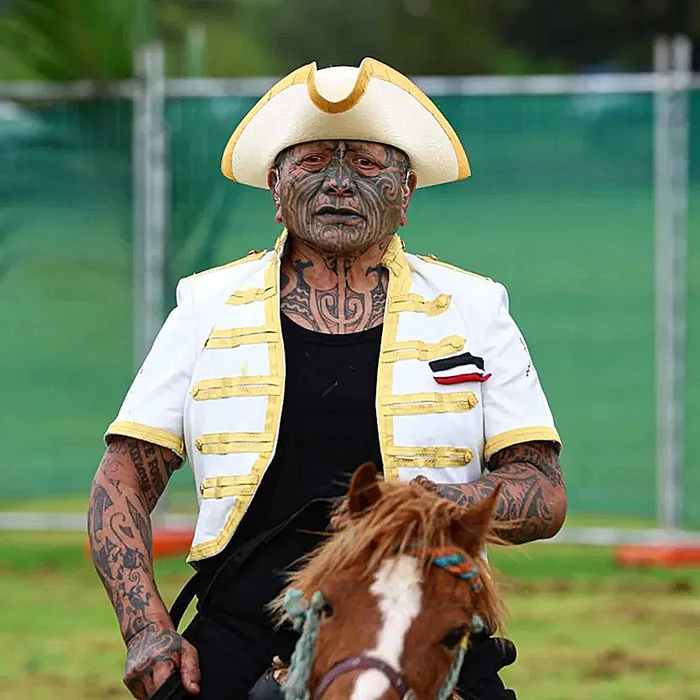
He used this technique to powerful effect in the “stage show” put on when the Waitangi Tribunal came to Rūātoki in 2005. It was preceded by two days of creative conversation in which Iti encouraged his fellow performers to put themselves, imaginatively, in the shoes of the first Māori to encounter the English.
“Imagine yourself in 1860 when they arrived there, and they issued an eviction notice. How do we present that? To be able to perform and to present – to light the fire, feel the heat and smell the smoke – it was an amazing time. The media managed to capture those magic moments.”
At a hui in Ōpōtiki a decade earlier, in another instance of advocacy mixed with “performance”, Iti mounted a stepladder to present a sweaty horse blanket – a symbolic payment for Tūhoe land taken by the Crown – to the then Minister for Treaty Negotiations, Doug Graham.
When he walked into the hui carrying his nephew’s horse blanket inscribed with Tūhoe wisdom, Iti said he was shocked to discover the attendees were sitting high up in the room.
“Thinking on his toes”, he asked a nearby facilitator if the venue happened to have a portable ladder.
“That was really the highlight, stepping up on the ladder with a horse blanket. Of course, Doug Graham took the blanket. I heard that he kept it and he dry-cleaned it. When I heard that he had it hanging in the Treaty office, I thought I’d send him my invoice.”
Although he followed up with Graham on the blanket, Iti said he was “not too fussed” to have received no apology for his arrest in October 2007 during the so-called Urewera Raids from then-New Zealand prime minister, Helen Clark.
In response to alleged paramilitary training camps in the Tūhoe valley, police raided homes and properties and even stopped a school bus. Iti was among 18 people arrested on terrorism charges, and in 2012, alongside Te Rangikaiwhiria Kemara, he was sentenced to a two-and-a-half-year prison sentence for illegal possession of weapons, of which he served nine months.
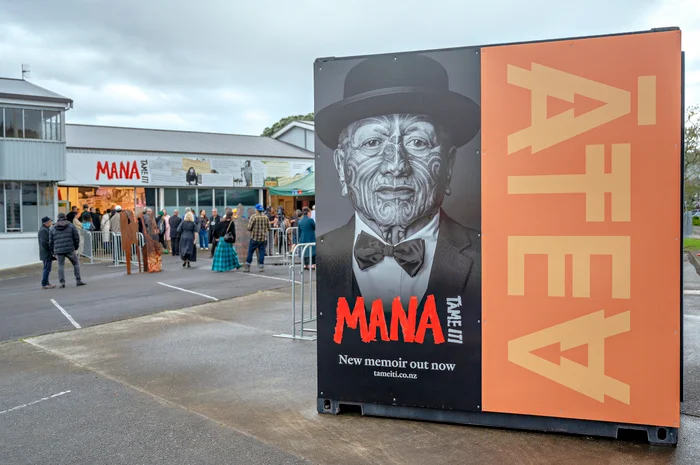
Iti still remembers sliding open his front door on the morning of October 15, 2007, and holding his breath for a moment as he heard a “boom” and realised “this was not a movie”.
“I could have been shot right at that moment, and I realised, ‘This is real. You just go through the motions. Down on the ground, the barrel of the rifle in the back of your head and the big dog there barking at you and all of that.”
Eighteen years on from the Urewera Raids, Iti is saddened about the Government’s ongoing “fight against Māori” and also the conflict among Māori leaders.
“Even the squabble internally with Tūhoe … we just need to be more open about that. We should have room to be critical about those different things that we don’t all agree on.”
While he is a strong supporter of Te Pāti Māori, Iti believes the party’s key figures “need a bit of learning” to find a more harmonious way forward.
“We need to be open about having those conversations with party politics. I’m a little bit sad about that, and I hope that they find a pathway internally within the party because we need their support.”
Māori leaders and activities need to assemble at a hui for some “deeper conversation”, he said.
Although Iti once shot a bullet through an Australian flag (in place of a New Zealand flag), the primary platforms for his political messaging these days are paintings and theatre performances, such as the 2022 installation I Will Not Speak Māori.
He finds it “strange” that in the past, many people were highly critical of him describing himself with the word ‘artist’, but now his paintings are in high demand.
“I love it and I’m still working on [art]. Still trying to be creative and find a pathway. I love that part of te wairua o ngā mahi toi [the spirit of art-making].
“I’m really excited about how the future is going to be, for me anyway. Particularly working with my two boys, my mokopuna and my nephew.
“It’s an amazing moment for me personally, working together as a whānau.
“It’s about maintaining our mana motuhake in our practice.”
– RNZ
